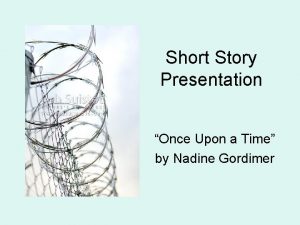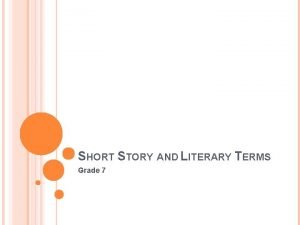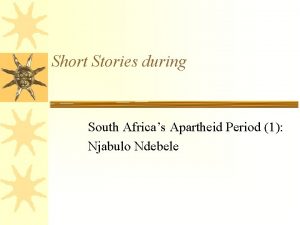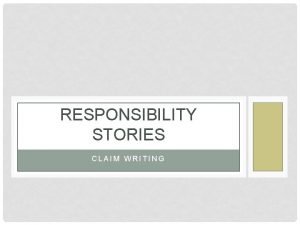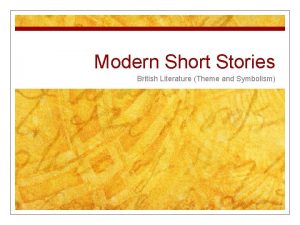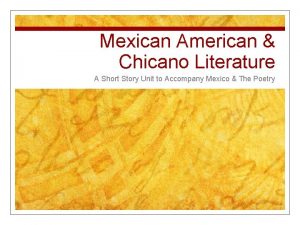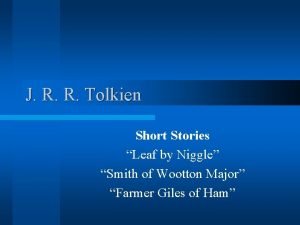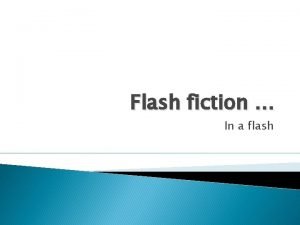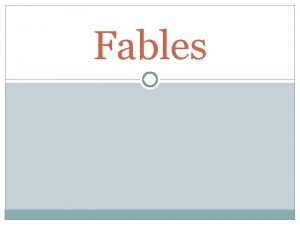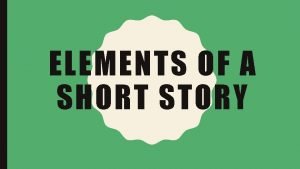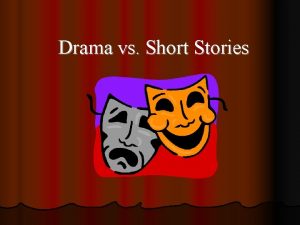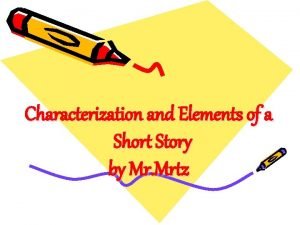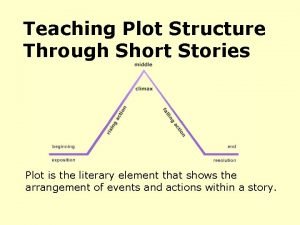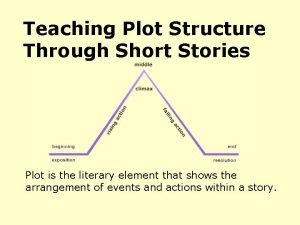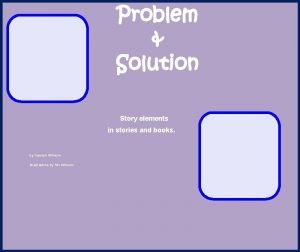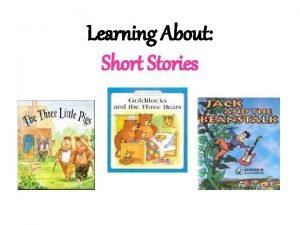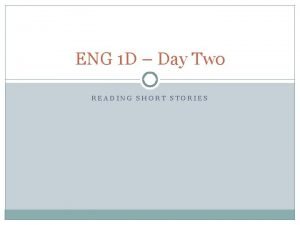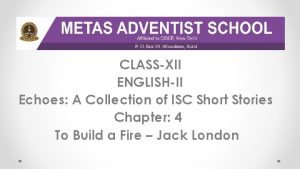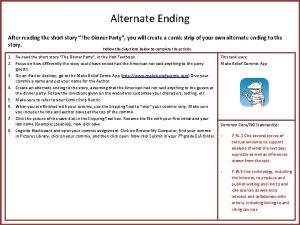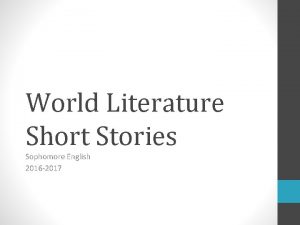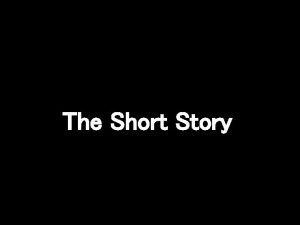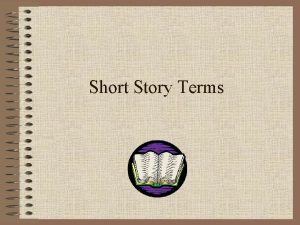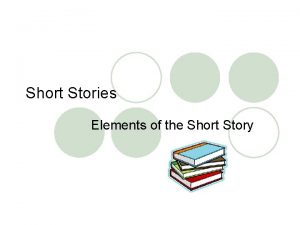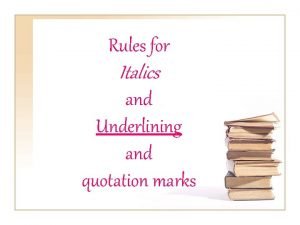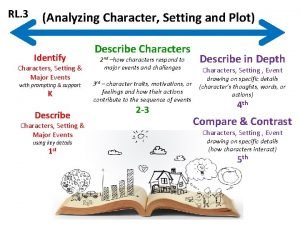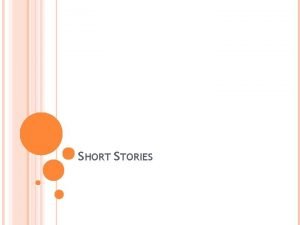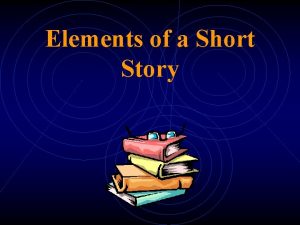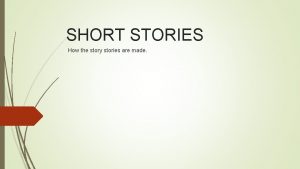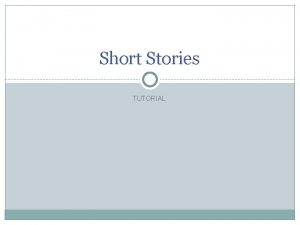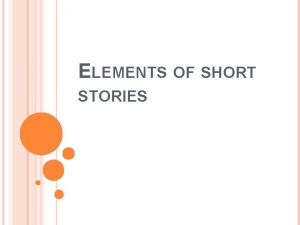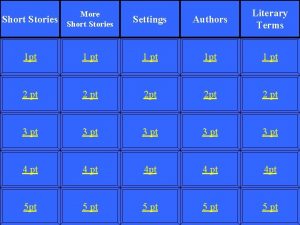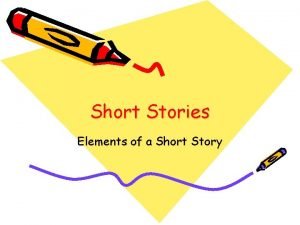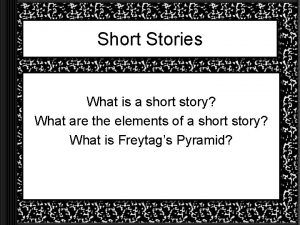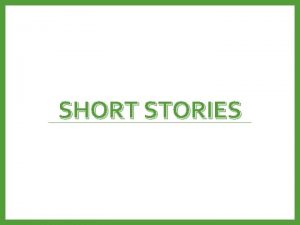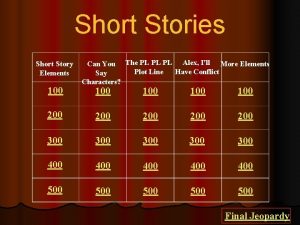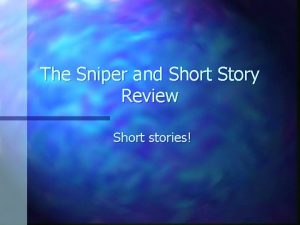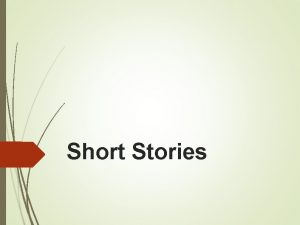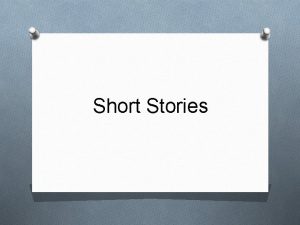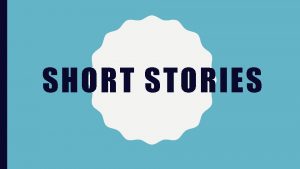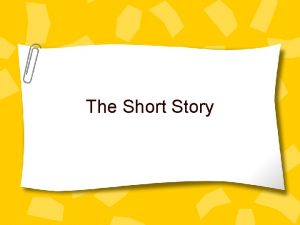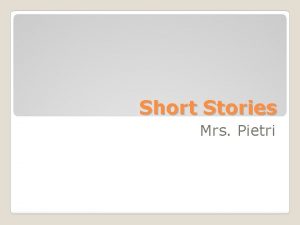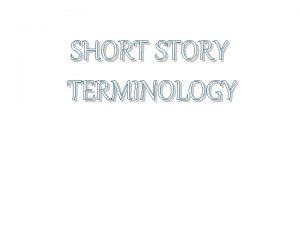Short Stories Introduction to the Short Story Unit
































- Slides: 32

Short Stories Introduction to the Short Story Unit

Plot The sequence of major events in a story. This is like a recipe. Every good chef follows a recipe to make good food. A short story has a recipe as well. The ingredients are the plot. See the plot diagram on pg 5 of packet.

Plot Diagram

Exposition The “background” of a story. We meet characters and discover the setting here. Meet and Greet!

Rising Action The main events of the story that act Like an escalator taking you up.

Climax Turning point in the story. Highest point in the story where the

Falling Action Events the occur after the climax and

Resolution Conflict is completely resolved, and the loose ends are tied up and organized!

Characters The people who take part in a story. They can be people, animals, imaginary creatures, aliens. Main Characters- the most important, who the story focuses on. Minor characters- help move the story along, but not too important.

Characters continued… Dynamic character- a character who the end of a story. Static character- a character who

Characters Continued Round Character- a character who rns a lot about these characters. Always Flat Character- No depth or Not very important to the story.

Characterization How a characters appearance,

Characterization continued Direct Characterization- the author directly. Indirect Characterization- audience at they do, and what others say about

Symbolism One thing that stands for another. Ex. A heart usually stands for Love You give an example!

Foreshadowing Hints or clues about what is to take

Irony Verbal Irony- when a character says something that is the OPPOSITE of what they meant. Situational Irony- When something turns out differently than we expected. Dramatic Irony- When the audience knows something that the characters do not.

Conflict Disagreements and FIGHTS!!!! In literature, there are several types

Man Vs. Man occurs when a character has an haracter in the story. EXTERNAL Examples-That is your job!!

Man Vs. Society Occurs when a character disagrees EXTERNAL

Man Vs. Nature Occurs when a character has a problem with outside forces: Weather Land Animals, etc. EXTERNAL

Man Vs. Himself Occurs when a character has an internal struggle with his thoughts and ideas. *More than one conflict usually occurs in a story! Sometimes all four are present!*

Anachronism the inclusion of an element that does of place. ) Flashbacks are anachronisms.

Flashback Going back in time to events that took place before the story began. Hit pause, and the REWIND!

Allusion reference to a historic/religious In “The Scarlet Ibis, ” Resurrection are allusions. the

Archetype a thing or entity that evokes deep responses in the reader. (A Symbol!) Examples are, in “The Scarlet Ibis, ” the responsible older brother, the sickly, weak, and beloved younger brother. In “The Cask…, ” the cloaked villain.

Theme Main lesson or Moral that the author Example- in “The Scarlett Ibis” the ten mixed into our human relationships.

Point of View Who is telling the story? Third person- she, they, etc. First person- I, me, my, we, etc.

Tone The attitude of the speaker or

Mood The feeling or atmosphere that an Moods can be created using anguage. “Cask of Amontillado”-dread and

Motivation Why a character does something. Can be motivated for good and for bad.

Setting The time and place of the action of a Sometimes setting is so important, ch as in “The Cask of Amontillado. ”

Dialogue Characters speaking to each other! Look for quotation marks.
 Short short short long long long short short short
Short short short long long long short short short Introduction about short story
Introduction about short story Once upon a time introduction
Once upon a time introduction Simple story
Simple story Grade 7 short story unit
Grade 7 short story unit Short stories about apartheid
Short stories about apartheid Story about responsibility
Story about responsibility A shocking accident theme
A shocking accident theme Chicano literature short stories
Chicano literature short stories Main idea short stories
Main idea short stories Tolkien short stories
Tolkien short stories Barney by will stanton
Barney by will stanton Shortest short stories
Shortest short stories A short fable
A short fable Element of short story
Element of short story Drama and short story differences
Drama and short story differences Indirect characterization words
Indirect characterization words What's a short story
What's a short story What is the plot of a story
What is the plot of a story Story structure
Story structure Story elements problem and solution
Story elements problem and solution Essential questions for short stories
Essential questions for short stories Short stories for grade 10
Short stories for grade 10 Eng1d short stories
Eng1d short stories Echoes a collection of isc short stories
Echoes a collection of isc short stories Short stories with alternate endings
Short stories with alternate endings World literature short stories
World literature short stories A short story on discipline
A short story on discipline Short stories with the theme of hope
Short stories with the theme of hope Short story with flashback
Short story with flashback Short story element
Short story element Are book titles underlined or italicized
Are book titles underlined or italicized Describe a setting
Describe a setting


